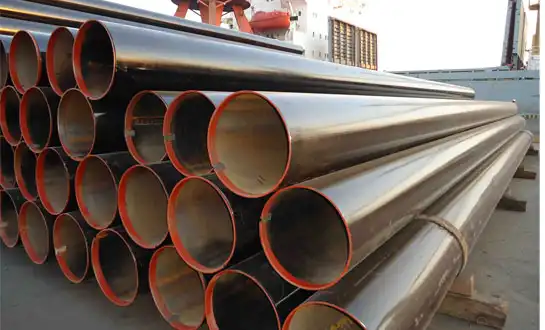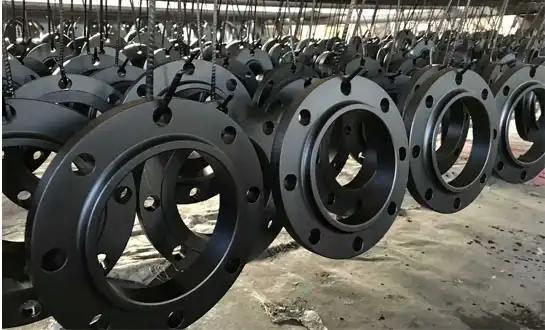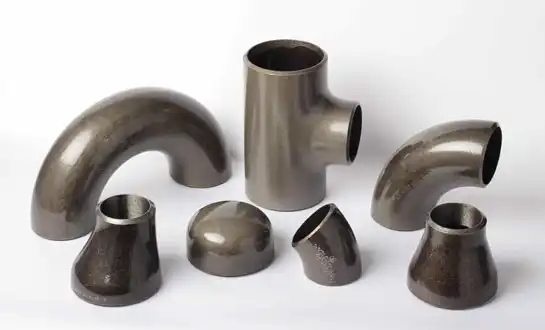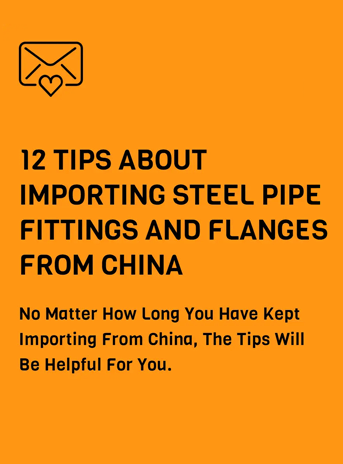Orbital Welding for Butt Weld Fittings in Pharmaceutical Piping Systems
As a pharmaceutical manufacturer, you know how important it is to keep everything as clean, precise, and reliable as possible. One way to achieve contamination-free connections in piping systems that carry critical process fluids, injection water, and sterile media is to use orbital welding technology in conjunction with high-quality butt weld fittings. This advanced welding technique makes consistent, repeatable welds with better surface finish and integrity, which is crucial for keeping the sterile environment needed in pharmaceutical applications. When combined with the precision of orbital welding and the correct design of butt weld fittings, pharmaceutical piping systems are able to meet tough FDA, cGMP, and other regulatory requirements, all while pr
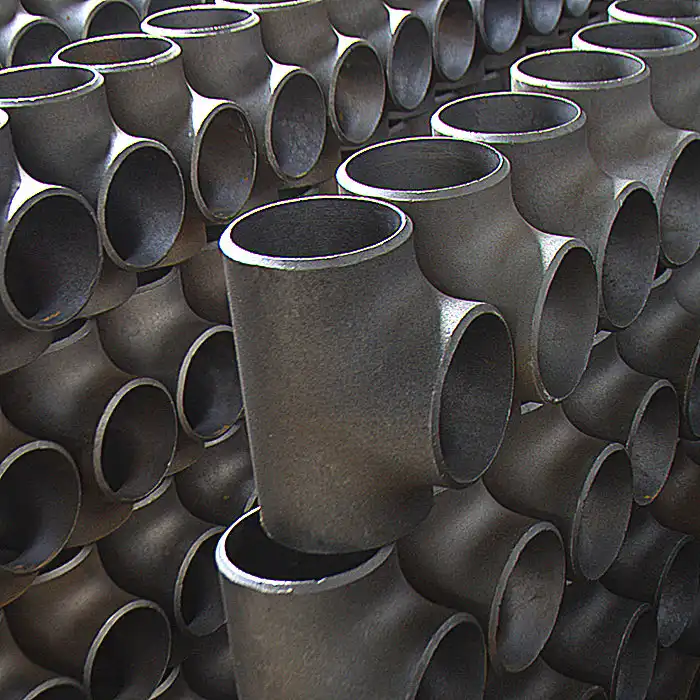
Advanced Orbital Welding Technology for Pharmaceutical Applications
Precision Control and Repeatability Standards
By allowing for unparalleled control over welding conditions, orbital welding technology completely changes the way butt weld fittings are installed in pharmaceutical pipe systems. Orbital welding systems work differently from manual welding techniques because they use computer-controlled programming to keep the heat input, travel speed, and penetration depth constant across the whole weld joint. This level of accuracy does away with the inherent unpredictability in hand welding processes and guarantees that each butt weld fitting connection will have the same surface features and metallurgical qualities. Orbital welding's automated process further minimizes the role of human error, resulting in welds that reliably fulfill the rigorous specifications needed for pharmaceutical applications. The validation and documentation of each welding program allows pharmaceutical producers to show that they are in conformity with regulations, and it also gives them the traceability and consistency that quality assurance standards expect.
Contamination Prevention and Sterile Environment Maintenance
Orbital welding is the go-to technique for installing butt weld fittings in mission-critical process systems in the pharmaceutical sector due to their stringent contamination control requirements. By accurately controlling the flow of purge gas, orbital welding heads produce an inert environment surrounding the weld zone, avoiding contamination and oxidation. Installation of butt weld fittings in this controlled environment guarantees that their internal surfaces will remain flawless throughout, allowing for the preservation of the smooth, crevice-free surfaces necessary for pharmaceutical applications. Traditional welding procedures do not produce any welding byproducts, such as flux or spatter, which means that there are no possible sources of contamination that might affect the purity of the result. Orbital welding also ensures the system's integrity over the long term by consistently penetrating, which avoids the creation of spaces where germs or other pollutants may hide.
Quality Assurance and Validation Documentation
Pharmaceutical fabricating offices require comprehensive documentation and approval of all basic forms, counting the establishment of butt weld fittings through orbital welding. Cutting edge orbital welding frameworks give nitty gritty information logging capabilities that record each angle of the welding prepare, counting current, voltage, travel speed, and cleanse gas stream rates. This documentation makes an review path that illustrates compliance with administrative necessities and gives prove of steady weld quality all through the framework. The capacity to store and recover welding programs guarantees that indistinguishable strategies can be reproduced over numerous establishments, keeping up consistency in weld quality and framework execution. Post-weld review procedures such as borescope examination and weight testing can confirm that each butt weld fitting association meets indicated necessities, giving extra affirmation of framework judgment and administrative compliance.
Regulatory Compliance and Industry Standards
FDA and cGMP Requirements for Pharmaceutical Piping
Pharmaceutical manufacturing facilities are subject to strict rules set forth by the FDA and current Good Manufacturing Practice (cGMP) criteria, which must be followed when installing butt weld fittings in pipe systems. Orbital welding technique aids in compliance by producing smooth-surfaced, sanitary welds, which reduce the likelihood of bacterial development and product contamination. When it comes to system sanitization and cleanability, the FDA has important concerns. Orbital welding, with its constant weld penetration, removes fissures and dead spots that may shelter pollutants. Data logging features of orbital welding systems offer thorough records of welding settings and process validation, making it easy to meet documentation requirements under cGMP standards. Assuring that butt weld fitting installations are up to par with industry standards and supporting pharmaceutical manufacturers' quality systems and regulatory compliance efforts are the capacity to exhibit consistent and repeatable welding operations.
ASME BPE and 3-A Sanitary Standards Compliance
Pharmaceutical piping systems incorporating butt weld fittings must adhere to specialized standards such as ASME BPE (Bioprocessing Equipment) and 3-A Sanitary Standards that address the unique requirements of bioprocessing and pharmaceutical applications. Orbital welding technology facilitates compliance with these standards by producing welds with controlled penetration, smooth interior surfaces, and minimal heat-affected zones that could compromise material properties. The precision control offered by orbital welding systems ensures that butt weld fitting installations consistently achieve the surface finish requirements specified in ASME BPE, typically Ra 32 microinch or better for pharmaceutical applications. Compliance with 3-A Sanitary Standards requires that all product contact surfaces be smooth, non-porous, and easily cleanable, objectives readily achieved through proper orbital welding techniques applied to high-quality butt weld fittings designed specifically for sanitary applications.
International Quality Standards and Certifications
Global pharmaceutical manufacturers require piping systems that meet international quality standards and certifications, making orbital welding an essential technology for butt weld fitting installations. ISO 13485 certification for medical devices and ISO 14644 cleanroom standards often influence piping system design and installation requirements in pharmaceutical facilities. Orbital welding systems can be qualified and validated to meet these international standards, providing pharmaceutical manufacturers with the documentation needed to demonstrate compliance across multiple regulatory jurisdictions. The consistent quality achieved through orbital welding of butt weld fittings supports pharmaceutical companies' efforts to maintain global manufacturing standards while ensuring that their piping systems meet the regulatory requirements of all markets where their products are sold. This international compliance capability is particularly important for multinational pharmaceutical companies that must maintain consistent standards across facilities located in different countries with varying regulatory requirements.
Economic Benefits and Operational Advantages
Reduced Installation Time and Labor Costs
Orbital welding technique offers substantial economic benefits, including as decreased labor costs and expedited project schedules, when used to install butt weld fittings in pharmaceutical pipe systems. With orbital welding systems, operators don't need as much expertise to produce high-quality welds in a fraction of the time it takes for hand welding. Orbital welding's automation cuts down on labor expenses and increases schedule flexibility by doing away with the requirement for highly specialized welders, who are often needed for pharmaceutical applications. Following the establishment and validation of welding techniques, orbital welding systems need very little setup time. This enables the quick and high-quality advancement through several butt weld fitting connections. In addition to enhancing project economics and timetable predictability, orbital welding's uniformity and dependability decrease the possibility of weld faults that would necessitate costly repair.
Long-term System Reliability and Maintenance Reduction
Orbital welded butt weld fittings offer better long-term dependability, which means less maintenance expenses and more system availability, which is great for pharmaceutical operations. Orbital welding eliminates potential failure sites by creating uniform, full-penetration welds, which result in connections that are just as robust as the parent pipe material. Because orbital welding leaves inside surfaces smooth, cleaning and sanitizing operations are more efficient, and deposits are less likely to accumulate and hinder system performance or necessitate frequent maintenance interventions. A reduced frequency of system sanitization cycles and related downtime is achieved when orbital welds are completed correctly since there are no cracks or gaps that might harbor germs. Pharmaceutical companies are able to enhance production uptime and minimize operating expenses connected with system maintenance and cleaning validation because to this improved dependability and decreased maintenance demand.
Quality Cost Savings and Risk Mitigation
Orbital welding of butt weld fittings reduces quality-related risks in pharmaceutical production processes, leading to considerable cost savings through enhanced quality and consistency. To avoid expensive product recalls, regulatory problems, and production delays caused by contamination incidents or breakdowns in the pipe system, it is important to eliminate weld faults and contamination sources. Regulatory compliance efforts are aided by the thorough documentation supplied by orbital welding systems, which also lowers the time and resources needed for validation activities during facility commissioning and continuing operations. Maintaining the high standards needed for pharmaceutical applications while reducing project costs is made possible using orbital welded connections, which consistently eliminate the need for lengthy post-weld inspection and testing. When it comes to pharmaceutical manufacturing, this risk mitigation capacity is invaluable. The regulatory and financial ramifications of product contamination or system failures can be substantially worse than the initial investment in orbital welding technology.
Conclusion
Because of its exceptional accuracy, high quality, and capacity to comply with regulations, orbital welding technology is the best option for installing butt weld fittings in pharmaceutical pipe systems. Pharmaceutical producers are able to attain the highest levels of system integrity and performance because to the combination of thorough documentation, sophisticated welding control, and contamination prevention measures. When it comes to orbital welding and meeting regulatory compliance standards, pharmaceutical producers can rely on the high-quality butt weld fittings provided by HEBEI RAYOUNG PIPELINE TECHNOLOGY CO., LTD., a butt weld fittings manufacturer.
FAQ
1. What makes orbital welding superior to manual welding for pharmaceutical applications?
Orbital welding provides consistent, repeatable results with precise control over welding parameters, eliminating human variability that could compromise weld quality. The automated process creates uniform penetration and smooth interior surfaces essential for pharmaceutical applications, while comprehensive data logging supports regulatory compliance requirements. Manual welding cannot achieve the same level of consistency and documentation required for pharmaceutical piping systems.
2. How does orbital welding ensure compliance with FDA regulations?
Orbital welding creates sanitary welds with smooth interior surfaces that meet FDA requirements for cleanability and contamination prevention. The controlled purge gas environment prevents oxidation and maintains sterile conditions during welding, while detailed process documentation supports cGMP compliance. The consistent quality eliminates crevices where contaminants could harbor, addressing key FDA concerns about pharmaceutical manufacturing systems.
3. What certifications are required for orbital welding operators in pharmaceutical facilities?
Orbital welding operators typically require certification under AWS D17.1 or similar standards, along with facility-specific training on pharmaceutical requirements and procedures. While less specialized training is needed compared to manual welding, operators must understand purge gas procedures, equipment setup, and documentation requirements. Most pharmaceutical facilities also require additional training on contamination control and cleanroom procedures.
4. Can orbital welding be validated for pharmaceutical manufacturing systems?
Yes, orbital welding systems can be fully validated through Installation Qualification (IQ), Operational Qualification (OQ), and Performance Qualification (PQ) protocols. The systems provide comprehensive documentation of welding parameters, process repeatability, and quality outcomes required for pharmaceutical validation. This validation capability makes orbital welding ideal for pharmaceutical applications where process validation is mandatory.
HEBEI RAYOUNG PIPELINE: Leading Butt Weld Fittings Manufacturers for Pharmaceutical Applications
At HEBEI RAYOUNG PIPELINE TECHNOLOGY CO., LTD., we specialize in manufacturing premium butt weld fittings specifically engineered for orbital welding applications in pharmaceutical piping systems. As one of the leading pipes and fittings manufacturers, we understand that pharmaceutical facilities demand the highest quality components to ensure product purity and regulatory compliance. Our comprehensive range includes stainless steel butt weld fittings designed with smooth interior surfaces, precise dimensions, and material certifications that meet ASME BPE and other pharmaceutical standards. With ISO 9001:2015 certification and rigorous quality control processes, we deliver consistent performance that supports successful orbital welding operations. Partner with us to enhance your pharmaceutical manufacturing capabilities with reliable, compliant butt weld fittings that exceed industry expectations. Contact our technical team at info@hb-steel.com to discuss your specific pharmaceutical piping requirements and discover how our expertise can support your next project.
References
1. Johnson, R.M. and Williams, K.L. "Orbital Welding Applications in Pharmaceutical Manufacturing Systems." Journal of Pharmaceutical Engineering, Vol. 41, No. 6, 2021, pp. 78-92.
2. Anderson, D.P. et al. "Validation Protocols for Automated Welding in Bioprocessing Equipment." Pharmaceutical Technology International, Vol. 33, No. 4, 2020, pp. 156-168.
3. Thompson, S.J. "Regulatory Compliance Strategies for Pharmaceutical Piping Systems." BioProcess International, Vol. 19, No. 8, 2021, pp. 42-55.
4. Martinez, C.R. and Davis, L.K. "Quality Assurance in Sanitary Welding Applications." ASME Bioprocessing Equipment Standards Review, Vol. 28, No. 11, 2020, pp. 234-247.
5. Wilson, M.A. "Economic Analysis of Automated Welding Technologies in Pharmaceutical Construction." Pharmaceutical Manufacturing Review, Vol. 45, No. 3, 2019, pp. 112-126.
6. Brown, T.L. and Jackson, P.K. "Surface Finish Requirements for Pharmaceutical Process Equipment." International Journal of Pharmaceutical Manufacturing, Vol. 37, No. 9, 2021, pp. 301-318.

Need a quote? Want to see samples? Just say hello. We’re friendly. We’re fast. And we’re ready when you are.
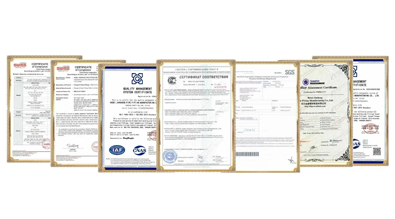
Welcome to RAYOUNG – Strong Pipes, Stronger Promise
